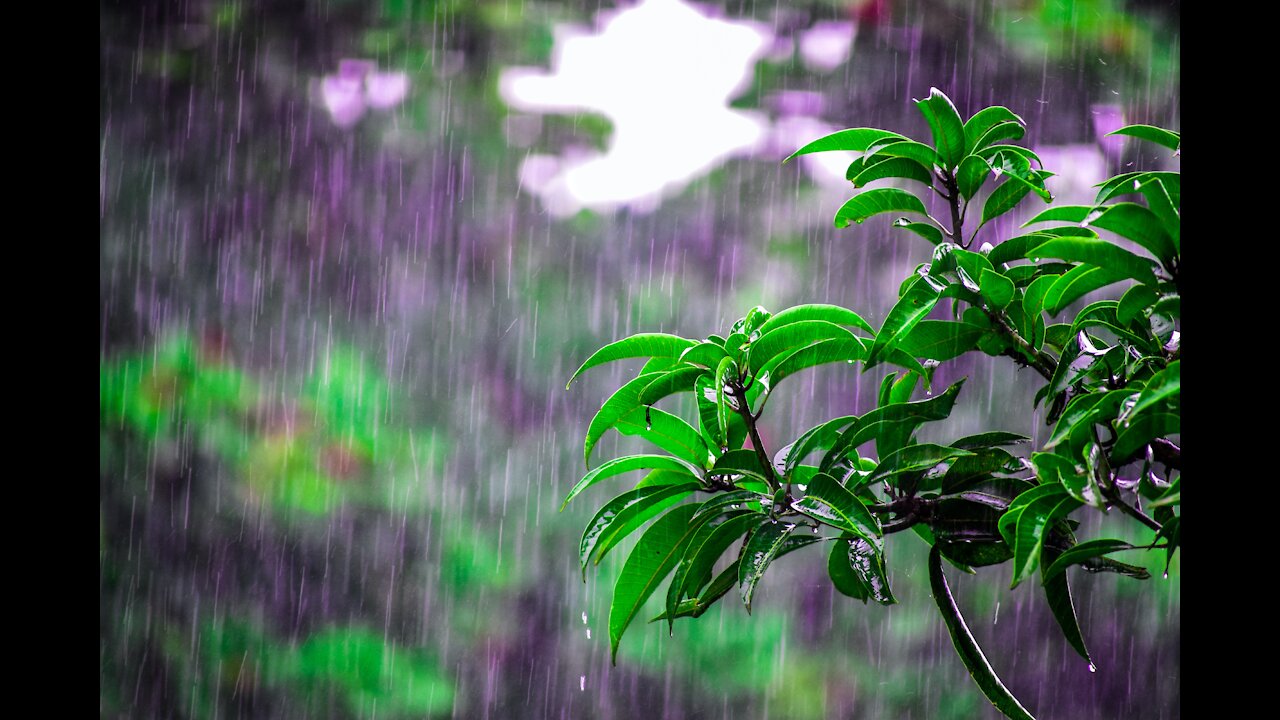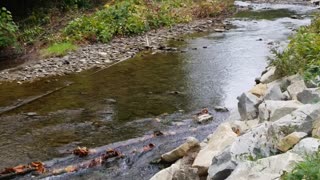Premium Only Content

"Rain is predictable, calming, stable, and non-threatening,"
Advantages of Rain
Rain has numerous implications for the environment, notably replenishing wild vegetation, moistening the air, forming streams and rivers, refilling the water table, and creating extremely beneficial negative ions. The redistribution of clean, fresh water in the water cycle is by far the most significant benefit of rainfall.
1. Human Life Sustenance: Human body needs a consistent availability of freshwater to help support its continued existence, which is made available by plenty of precipitation. To disintegrate solids, the human digestive system necessitates water. Sweat, urine, and feces all assist to completely eliminate hazardous toxins from the human system.
2. Plants cannot sustain without rain: Vegetation, plants and trees, grass, and blossoming flowering shrubs all necessitate water to survive and flourish. From see4f gcbbsds through adult stages of growth, plant roots soak up moisture and transmit it to the stems and leaves, promoting nourishment. As a direct consequence of photosynthesis, plants take in carbon dioxide from the atmosphere, providing the essential oxygen to the atmosphere for animal respiration.
3. Rain is a vitality resource for all components of the environment: Plant species get the water they require to convert solar energy into nutrition from rainwater-soaked soil, and animals derive their hydration from that watered vegetation as well as static and running water. Rain cools the air, which has already been scorched by the sun, rehydrating and replenishing parched leaves and grasslands. It retains rivers, waterways, and marshes, which in turn helps to furnish fresh water to fish and amphibians.
4. Spontaneous Freshwater Storage: Rainwater falls to the surface and is soaked into the topsoil, ultimately hitting aquifers in the bedrock. The water table in aquifers maintains high levels of concentration of water. Many man-made water wells serve to drink and to bathe water by pulling straight from the water table. Aquifer water penetrates through sedimentary rock to other regions, giving plants and trees a steady and consistent inflow of water.
5. Hydroelectric Facilities that Power Seamlessly: Hydroelectric facilities leverage an archaic manner of energy generation: they leverage the fluid motion of fast-moving rivers or the gravity of reservoirs to propel gigantic wind turbines. Rain furnishes all of the water capacity necessary to drive hydroelectric plants, rendering them pollution-free. As a source of energy, rain is completely complimentary. All of our hydroelectric plants are kept on running by a constant stream of precipitation.
6. Rain has other scientific edifices: Humans have recognized advanced functionality for rain. Rainwater-produced spontaneous lightning is now being studied by various researchers and see whether its electricity can actually be captured and stored separately. Scientists are also trying to investigate cloud seeding as a means of producing rain.
#rainshorts #rain #rainsleep
FOLLOW US:
INSTAGRAM=https://bit.ly/2X2wv8q
TWITTER=https://bit.ly/3DHvaUj
TIKTOK=https://bit.ly/30eC2Kg
YOUTUBE=https://bit.ly/3oNMCSF
you going to learn the best way to lose weight
just click here =https://bit.ly/3mLBP98
thank you soo much
-
 7:20
7:20
threestrikesurout
4 years agoNonograms - Stable
57 -
 0:22
0:22
Gipper06
4 years agoCalming ocean
10 -
 0:34
0:34
MikeSeretti
3 years agoCalming Creek
162 -
 55:49
55:49
SGT Report
15 hours agoFAKED TRAGEDY, LONE GUNMAN OR PATSY? -- Jeffrey Prather
32.2K152 -
 9:30
9:30
Adam Does Movies
13 hours ago $0.21 earnedThe Long Walk - Movie Review
8.87K2 -
 2:28
2:28
WildCreatures
14 days ago $0.91 earnedNature's struggle for survival: Water snake devours mudpuppy
12.4K3 -
 1:07
1:07
Memology 101
15 hours ago $0.39 earnedEric Swallowswell compares January 6th to 9/11 and Pearl Harbor
7.85K15 -
 24:21
24:21
Uncommon Sense In Current Times
19 hours ago $12.65 earnedA Revolution of Virtue | Charlie Kirk on Beating the Woke, Faith & Saving the West
40.1K28 -
 33:17
33:17
Homesteading Family
5 hours agoThe End of The Pantry Chat
26.9K8 -
 18:42
18:42
Nicholas Bowling
18 hours ago $6.04 earnedCharlie Kirk Martyred – A Christian's Response
36.7K39